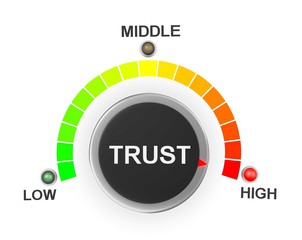As we all know, leadership can be defined many ways and includes dozens of different terms including standards such as showing empathy, having resilience, developing teams, coaching for success, and building trust. There are thousands of great books written on each of these leadership concepts that share ideas on how to be more effective leaders and how to make each concept a critical part of our leadership approaches and styles. For the most part, all of the content is very helpful and we all can learn and continue to become better leaders by understanding them and practicing them.
standards such as showing empathy, having resilience, developing teams, coaching for success, and building trust. There are thousands of great books written on each of these leadership concepts that share ideas on how to be more effective leaders and how to make each concept a critical part of our leadership approaches and styles. For the most part, all of the content is very helpful and we all can learn and continue to become better leaders by understanding them and practicing them.
During a recent Business Leadership workshop that I was conducting for a group of mid-career leaders, we had an in-depth discussion of the real challenges they are facing in 2017 and beyond. We started to talk about the concept of leadership trust and the fascinating relationship a leader and employee has when it comes to the concept of leadership trust. Good, mutual, and two-way trust is one of the most important parts of leadership and it is the foundation for getting things done successfully.
Throughout the discussion, we talked about some of the things that can disrupt trust and most of the conversations were centered around the “usual” topics such as being inauthentic, not telling the truth, not treating people fairly, not providing feedback, and not giving a 100% effort.
Then one of the participants said something very profound and sent the dialogue in a completely different direction; “To me, the thing that most disrupts trust in a leader to employee relationship is when the leader doesn’t have the skills and tools to be an effective leader and either fakes it all of the time or gives really bad advice.”
The other participants were agreed and the floodgates for deep discussion were opened…
“That is a great point. Think about the damage that a leader does to a team, business unit, and company by not having the right answers to the questions” another participant chimed in.
I asked the group for a few examples, and they all were profound yet similar. One leader shared a common story. “As you know, we are all in R&D. In my company, we have a product leadership strategy and our focus is on bringing new, innovative products to market. We are responsible for hundreds of millions of dollars in budget and ultimately the decisions and investment we make will keep or company going or put us out of business. One day, we were pursuing a new product idea and the technology we discovered looked very promising. I remember the Product Team going to the manager and asking if they should do a short and long term TAM, SAM, SOM analysis before continuing with the development.
It was so obvious that the manager had no clue what TAM, SAM, SOM meant and instead of asking, he continued to act like he knew what it was and eventually told us to decide what to do and get back to him. After that, any trust we had for the manager was gone forever because we knew we couldn’t trust him to give us the right advice or come up with the right answers.”
This is probably a scenario that happens hundreds of thousands of times a day in the global business world and something we all as leaders need to be cognizant of because there is no real metric that tells us our trust level is up or down based on the perception our people have of our knowledge and skills.
Based on the conclusion of the conversation, we came up with three simple tips to make sure we aren’t caught in this unfortunate situation:
Go to training and develop your skills
Within most organizations today, training programs are a premium. If you have the chance to go, then go! Study business leadership, business acumen, technical skills, and anything else you can get your hands on. There are great training programs that teach the basics of business, finance, marketing, and sales so you can lead by knowing the answers!
Admit when you don’t know something
Worse than not having the skills, is not admitting you don’t know something. In the example described earlier, think of how more effective the manager could have been if he just admitted he didn’t know the concepts and learned about them for next time.
Create an environment for continuous learning
Learning doesn’t have to be a discreet event and it certainly doesn’t have to be for a special few. As a leader, you should do everything possible to create an environment of continuous learning where everyone on the team is learning and sharing as a normal course of business.
Oh yeah…do you know what TAM SAM SOM means? Here’s the answer if you didn’t look at up yet!
TAM = Total Available Market
SAM = Serviceable Available Market (the slice of market you can reach)
SOM = Serviceable Obtainable Market (the slice of the market you can actually capture with your value proposition)




